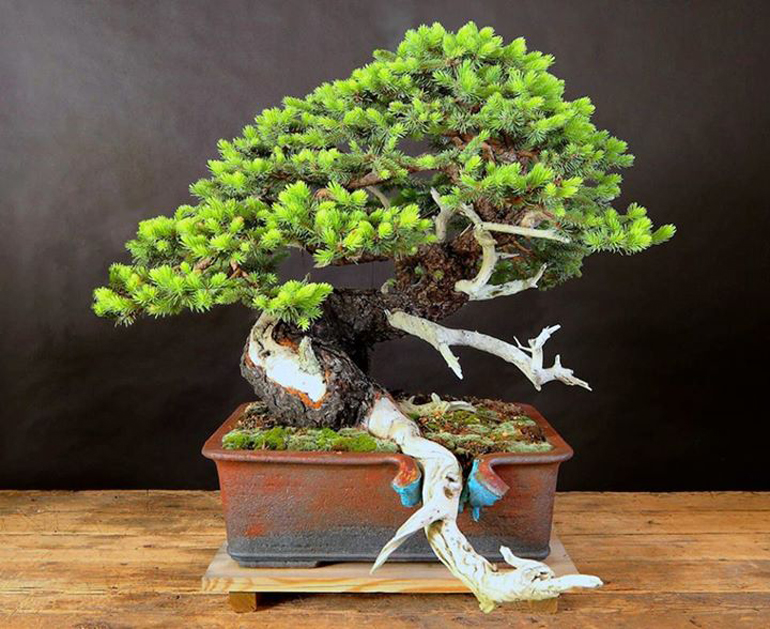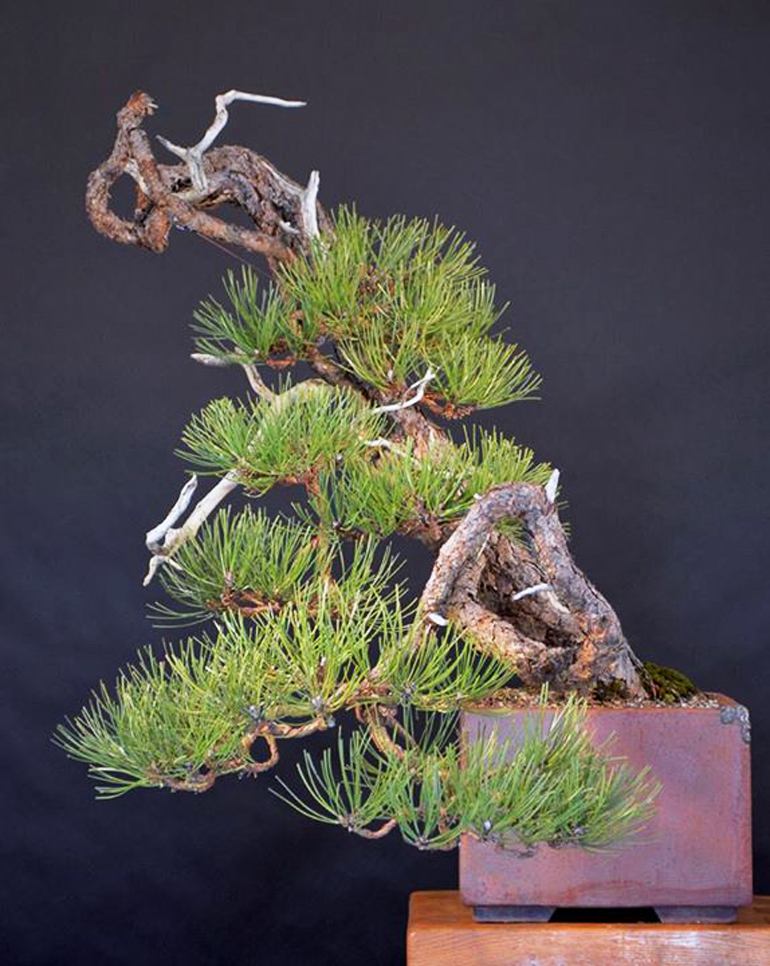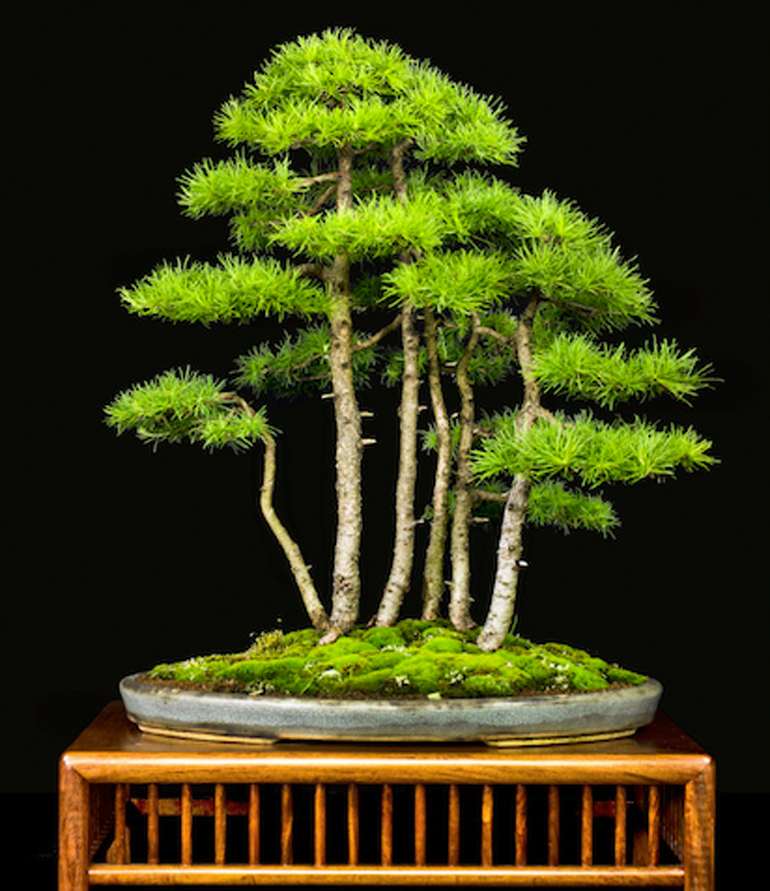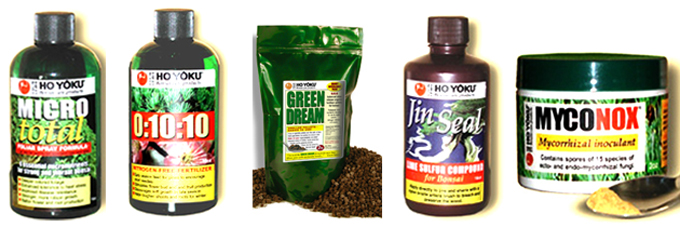
The inspiration for this post arouse when I stumbled upon this remarkable tree on facebook. It belongs to Colin Lewis. Here's his caption: "Colorado blue spruce, acquired 2008 from Harold Sasaki. Styled 2011-2012. Pot custom made by my old friend Dan Barton, 2013. I'm letting it grow this year to refresh some old congested areas. Maybe I'll show it in 2016..."
I’m going digging for Tamarack (Larch – Larix laricina) tomorrow, so thought I’d resurrect this post from last November that shows some trees that were collected here in the U.S., including the Tamarack forest you see below.
Le raison d’être for this post is the tree above. More accurately, the tree and the pot. Both are delightful and together, even more delightful.
However, and in spite of the magic of the bonsai above, two questions arise. Does the turquoise glaze (where the rim of the pot peels open to accommodate the dragon-like jin) enhance the overall effect or distract from it? To clarify, I love the opening in the pot, it’s color I’m curious about.
The second question is; without knowing how it came into existence (only Colin or Harold know), would the trunk be better off without the shari? Would the age and character of the tree be better expressed if we could see more of the old bark? And, is it one too many elements in a tree that already has so much going on? Or does it provide balance for the powerful jin?
I don’t have answers, just questions. But I do believe that Colin is one of those people who is interested in exploring and pushing bonsai boundaries. Maybe that’s the answer.
Below are a couple more of Colin’s trees that you might enjoy.

Colin's caption: "Oh what a tangled web we weave.... Crazy Ponderosa pine from Andy Smith 2005." We've shown this one before, but it's always worth another look. Colin posted it on facebook with the tree above and you can find it on his website as well.

This Tamarack forest is from Colin's website. I have a big soft spot for Tamarack (Larch: Larix laricina). It's one of several sub-arctic trees that reaches down into northern Vermont, New Hampshire and Maine (a little further south at higher elevations) and runs northwest through Canada's great Boreal forest and all the way into Yukon Territory with non-continuous growth in Alaska (if you've been following the debate on the Keystone XL pipeline, you might have heard something about the Boreal forest).

Colin Lewis' excellent Ho Yoku Bonsai Care Products are all available at Stone Lantern. So is his book, Bonsai Survival Manaul (below). Now's a good time to stock up, everything is 20% to 25% off.
Colin's expert advice provides what any bonsai enthusiast needs for success
Funny, you’re the second person in three days to question the blue – Danny Coffey was here on Sunday and raised exactly the same point. The glaze can be anything from a dull, thundercloud blue to the one you see, depending on what happens in the kiln. It is a tad brighter than anticipated but there are things that can be done to mute it.
I can’t claim credit nor accept responsibility for the shari – it’s the work of nature. I didn’t know it was there until I tried to pull off a small clump of moss that was taking hold on the trunk, and the whole area of bark just fell away. As it did so it exposed the callus which, when exposed to the air, grows faster and gives the appearance of a new shari. All will settle down in time.
Mr. Lewis,
I was thinking about preserving jinned roots from rotting nowadays and your tree is a great example. So i’m curious about your method to preserve that jin, especially the bottom half of course. I’m pretty sure that it’s not only lime sulphur, right? :)